Latest News
Kitchen Chat and more…
Kitchen Chat and more…
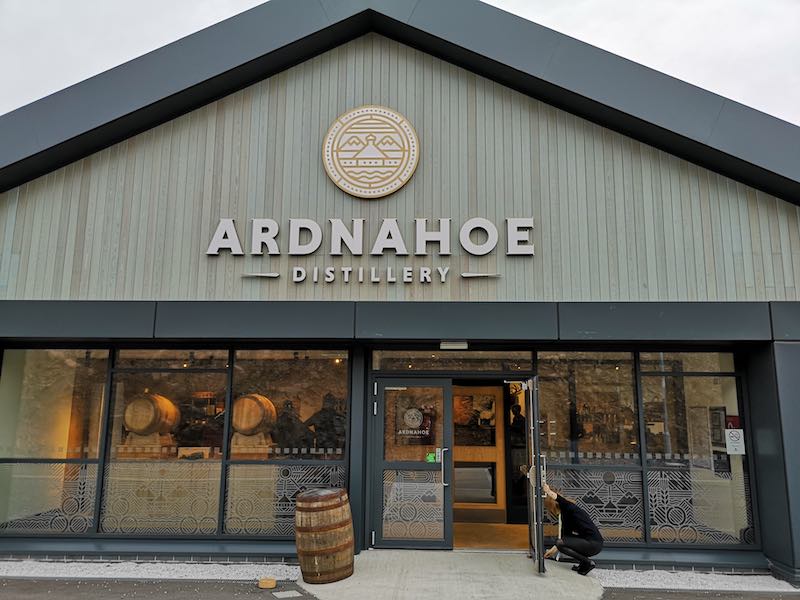
Ardnohoe Visitor Centre
Ardnahoe Distillery is the newest setup on Islay, and we arrived bright and early to the distillery on our tour day! As you can see in our picture above, the visitor centre team member was just opening up for the day! Hahaha! Talk about enthusiasm and “crazy whisky people” – that’s us!
Now, the relatively new distillery has an awesome team of people right at the front of their visitor centre. We went in and got ourselves signed in for our booked tour. As we were about 30 minutes early, we had the time to browse the shop for their different offerings.
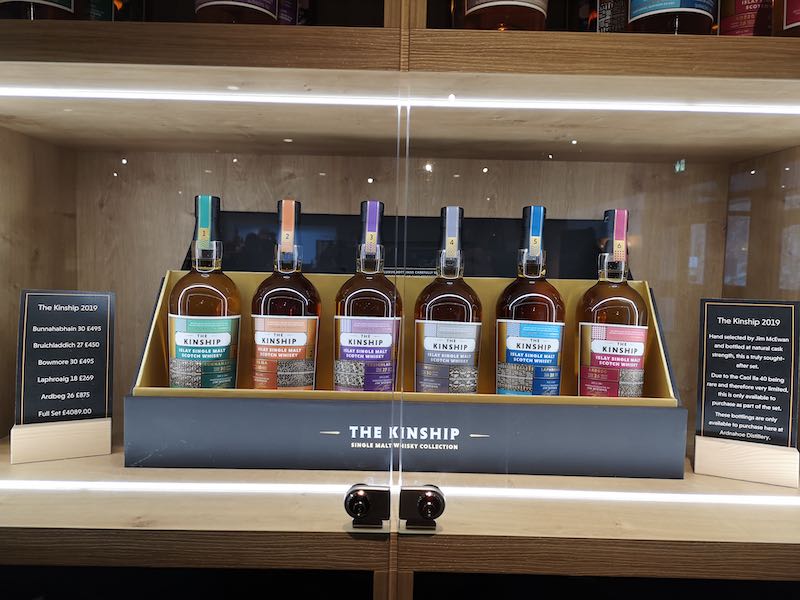
The full set of Kinship Bottles
We saw many Hunter Laing bottlings for sale, including the much sought-after Kinship bottles (picture above). However, nothing intrigued us more than a bottle of Laphroaig 12 Years Old as it was their shop exclusive. We eventually returned to buy that bottle to bring home with us.
Our guide came to us shortly after to bring us into the first room for our 10 am tour. With us was just one other couple from the United States of America, and we had a fantastic time interacting with one another. We met the same couple at Laphroaig and Ardbeg too! It was great fun to make new whisky friends and trade drams and stories. Whisky unites!

The family behind Ardnahoe
Spread across the entire wall in the first room was the history of Ardnahoe. First and foremost, we wanted to talk about the family behind the distillery. Fully owned by Hunter Laing Group, the owners of Ardnahoe are none other than Stewart Laing, a familiar name in the Scotch whisky industry and his two sons, Scott and Andrew Laing.
Stewart Laing founded the Hunter Laing Group in 2013, after fifty years in the industry. He first started his career at the Bruichladdich distillery, and later on, appeared to work with his family business. In 2013, Stewart decided to venture out on his own to create a new legacy with his sons.
Ardnahoe was a dream come true for Stewart. He dreamt of returning to Islay after all these years to set roots down on the island that ignite his passion for whisky. His dream finally took shape in the building of Ardnahoe.
The distillery takes its name from the nearby Loch that supplies the clean, crisp water for distillation. The building is purposely nestled into the hills close to the Loch for its heights. It was quite a sight to drive up to the distillery. The winding roads up the hill gave breathtaking views at every turn, and the tiny roads gave much excitement whenever a car appeared from the other direction. The elevation allows one to take in the sights of the Paps of Jura over the other side of the sea as well, giving visitors magnificent views of the Paps.
According to our guide, Irish monks came to Islay in the 14th century and introduced the art of distillation to the islanders after they saw how suitable Islay was for whisky production. Incidentally, generations of families in the Ardnahoe region illicitly distilled their own whisky using traditional techniques and handmade copper worm tubs. The 1644 Excise Act forced these people to “disappear” into the hills and forests, taking their equipment with them to continue illicit distillation. As a result, every step of the distillation progress was done by hand from barley to peat to water.
Loch Ardnahoe is said to be the deepest loch on Islay, but nobody truly knows its depth. Perhaps nobody wanted to try as the risks are high. The water in the loch is soft and filters through thousand years old peat and rock. Ardnahoe distillery uses this amazingly soft water for all its distillation needs.
After the history of Ardnahoe, our guide took us behind the first room, and into the production hall. He went through the safety brief as required, and very quickly, the five of us made our way to the first stop – the Bobby Mill.
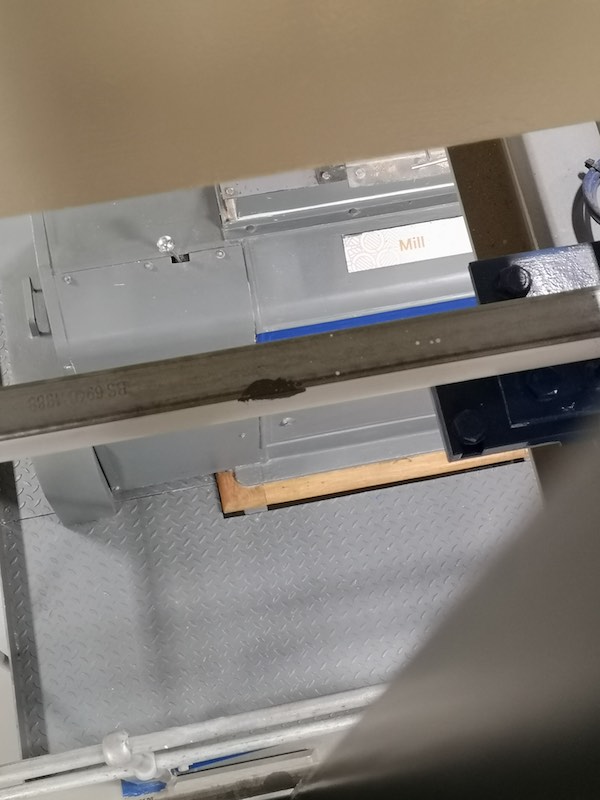
The Legendary Bobby Mill
The Bobby mill at Ardnahoe is the third one that we met so far, having been to Bruichladdich Distillery and Ardbeg Distillery earlier. As mentioned in the article on Ardbeg, the Bobby mill is precious to their owners as it is fully manual. Only four mills exist. The last mill is at Glen Scotia Distillery, located in Campbeltown.
Ardnahoe is a modern distillery with limited space, which means it does not have its own malting floor. They buy barley from mainland Scotland, and Port Ellen Malting helps them to malt and smoke the barley to 40ppm. The peat comes from Castle Hill, which is known to be floral, and the team hand-cuts the peat for maximum effects.
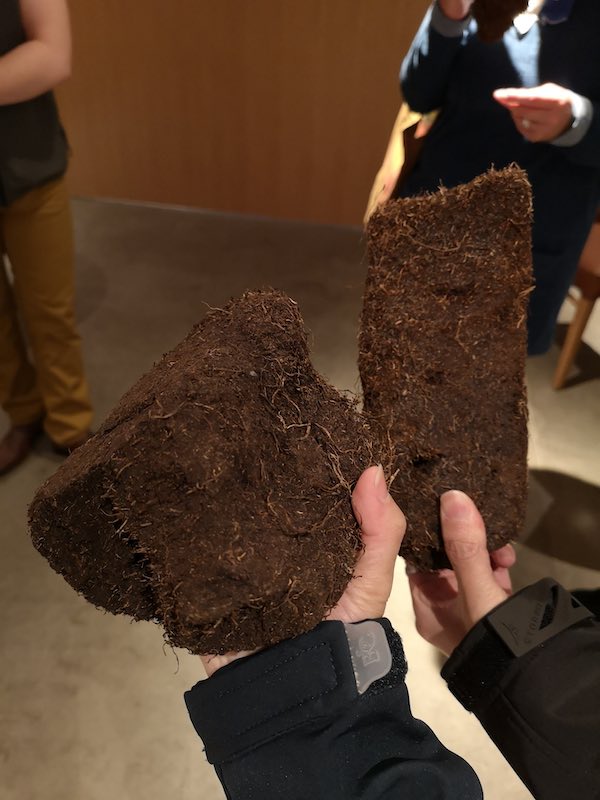
Peat from Castle Hill
Port Ellen Malting delivers 28 tons of barley every week, and the team at Ardnahoe sets the Bobby mill to work. After milling the barley to the right ratio, they store the barley in a 2.5tons grist bin.
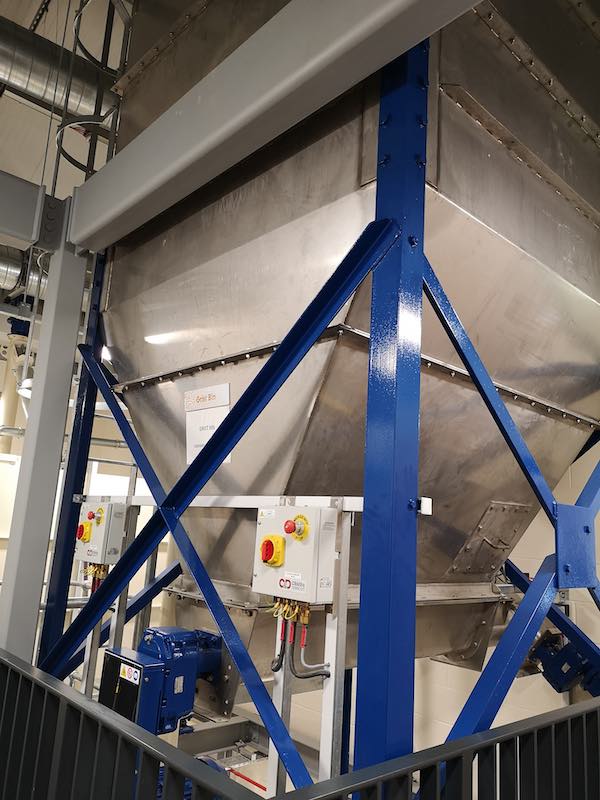
Grist Bin
Similar to most distilleries, Ardnahoe mills the barley into 70% grist, 20% husk and 10% flour. The maltster at the distillery weighs 100g of milled barley to check the ratio. It is a difficult job as one requires a lot of experience to know how to check the ratio. The maltster also needs to be accurate in his calculation as the Bobby mill is manual and does not have a control panel.
Once the team completes the milling process, the barley runs along to the mash house, where they enter the first procedure on their way to becoming whisky.
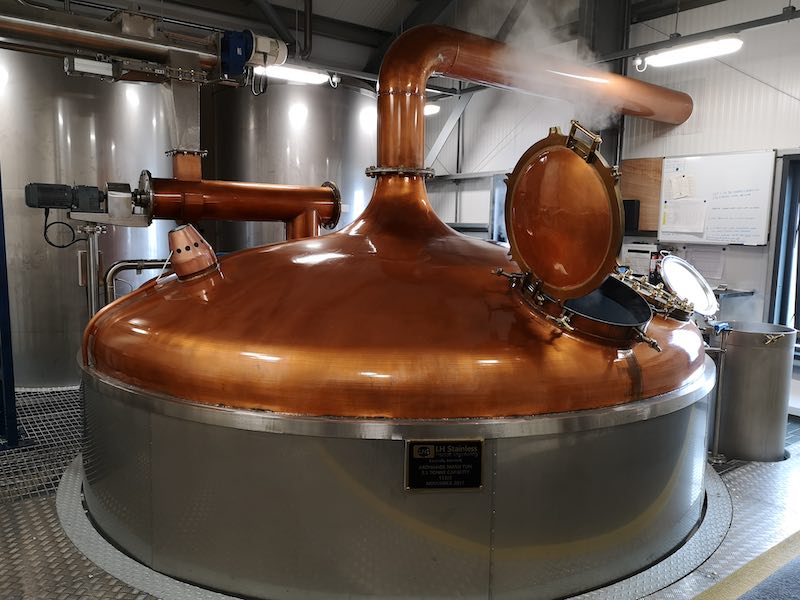
Semi Lauter Mash Tun
Ardnahoe distillery enlists a 2.5 tons semi-lauter mash tun to turn barley into wort or sugar water. Three steams of water go into the mash tun at various temperatures. The first water (10,500 litres) goes into the mash tun at 63-64 degrees C, and drains before the second steam of 3,000 litres goes in at 80 degrees C. The last steam of water (8,500 litres) goes in at 90 degrees C.
The end result is wort or sugar water, and it is cooled to between 18 to 23 degrees C before it gets pump into the Oregon pine wood washback. The remaining draff (spent barley) is channelled to the local farms to feed the cows!
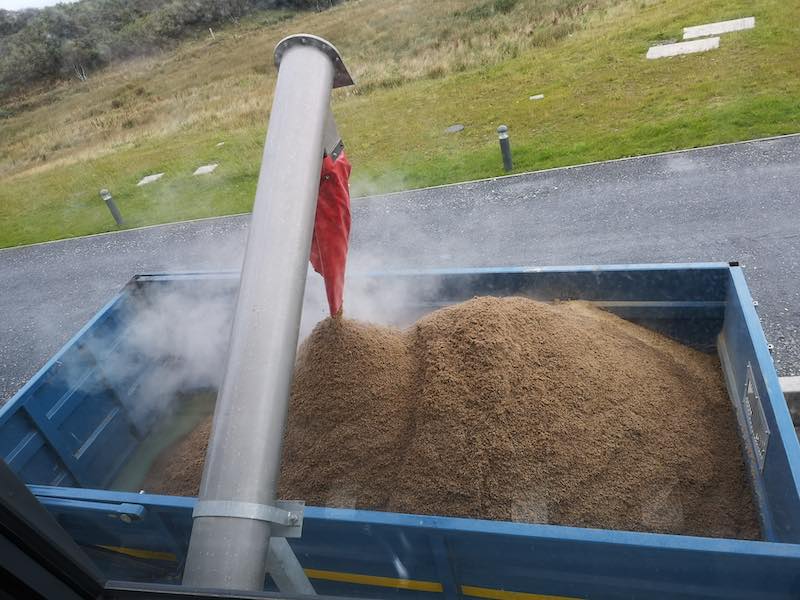
Draff
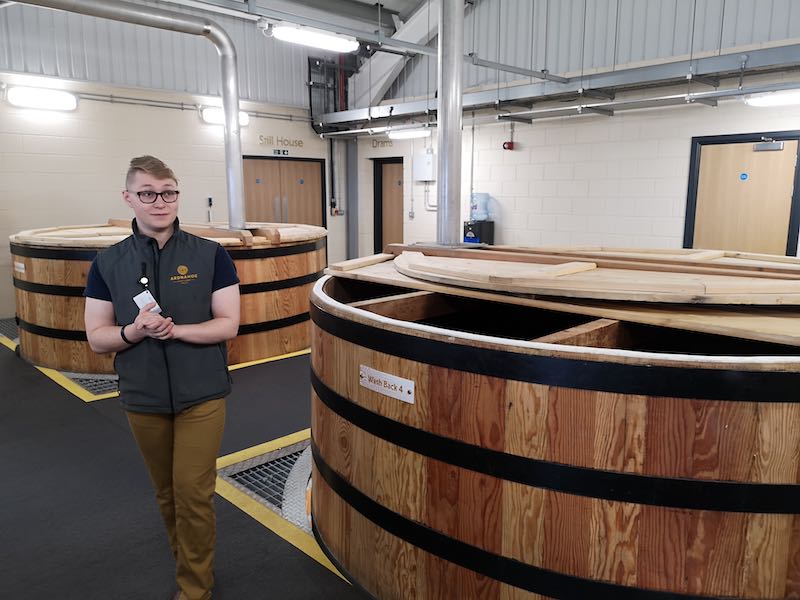
The Washbacks of Ardnahoe
The wort that goes into the washback then gets fermented. One Oregon pine wood washback holds 12,500 litres of wort. The distillery uses 40 tons of yeast for each fermentation cycle. Once the team adds the yeast, the fermentation hours starts and the cycle completes after 70 hours. Most fermentation cycles are around 50 hours, but Ardnahoe increases their fermentation to 70 hours to extract more ethers and flavours from the wort. The completed fermentation yields wash at around 7-9% abv.
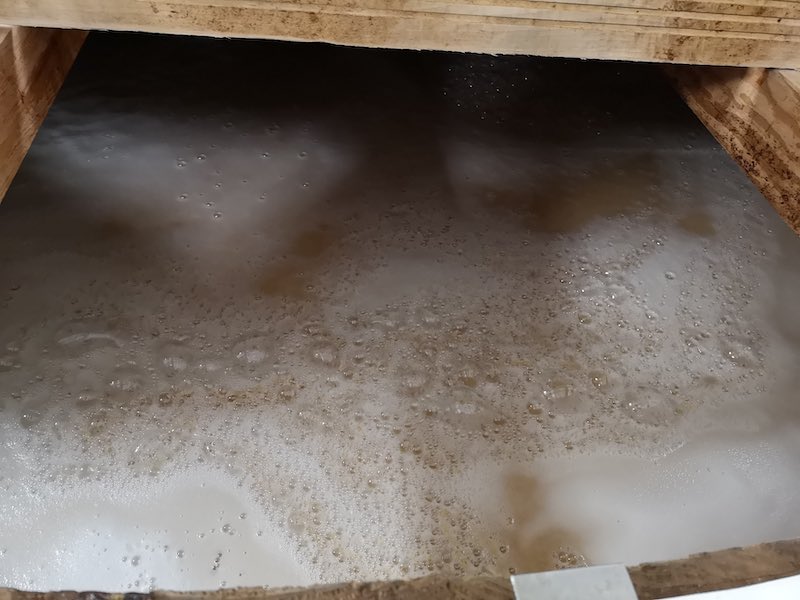
Yeast in Action
The fermentation in Ardnahoe was fascinating partly because the smell was pretty aromatic. Unlike some of the other distilleries where fermentation was a smelly affair, the washbacks in Ardnahoe smells good. It is a pity, however, that we could not taste the wash. It would, otherwise, be a very eye-opening experience!
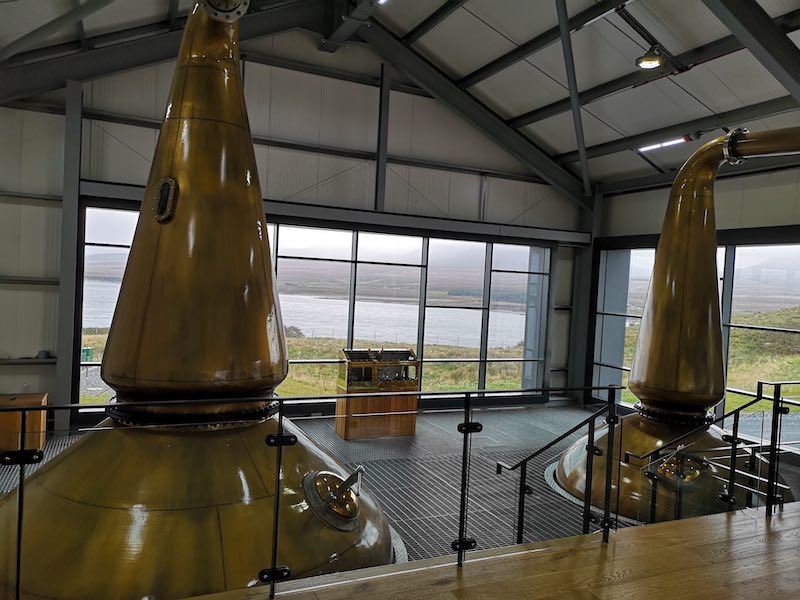
Stills of Ardnahoe
Ardnahoe has a pair of stills with the capacity of 12,000 litres. When the wash goes into the wash still, the team heats it up to about 90-92 degrees C to start the distillation process. The still has a 7 meters long lyne arm which encourages reflux. The lyne arm is connected to worm tub #1 outside the distillery which acts as a condenser. The liquid that exits the worm tub is now called low wines and it feeds into the spirit still.
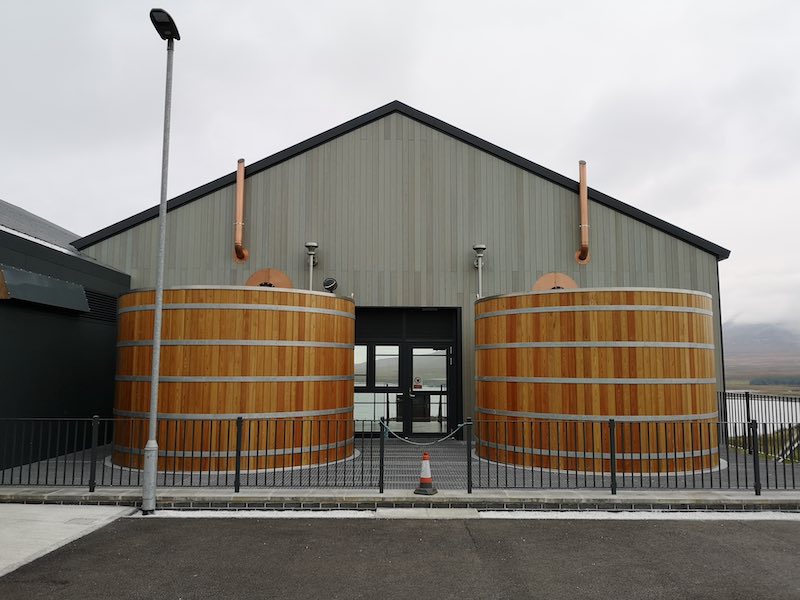
The Worm Tubs
The process repeats in the spirit still and the liquid goes into worm tub #2 before condensing into new make. The new make makes its way into the spirit safe. Ardnahoe takes its cut of the spirit between 68% to 63% abv. The head is 69% and above, while the tail is 62% and below. Both head and tail go back to the wash still for the next distillation.
Many people told us how magnificent the views are in the Still House of Ardnahoe. Unfortunately, we visited on a gloomy, rainy morning and all we could see were low clouds over the Paps of Jura. While the weather did not do us a favour that day, we enjoyed the cold and the rain!
As Ardnahoe currently sells some of its casks to individuals and brokers, we were not able to visit their warehouse unless we are cask owners. Therefore, we headed back to the visitor centre where our guide promised us a couple of drams to warm us up!
Once we got back to the warmth of the visitor centre, our guide took us to another room where about six to eight bottles sat patiently. All of them were from the Hunter Laing series. In case some of you are wondering, Hunter Laing Group is an independent bottler. They buy casks from other distilleries and bottles them under their name. One popular series under the Hunter Laing Group is the Hepburn’s Choice.
It is from one of the Hepburn’s Choice series that I chose a Tamdhu Bourbon cask. Tamdhu, as we know it, bottles exclusively in sherry casks. It was, therefore, pretty exciting to see a bourbon Tamdhu! I was quick to spot the rare dram and chose it as my complimentary dram. (We had another amazing Tamdhu bourbon cask last year in Taiwan too, but that’s another story for another day!)
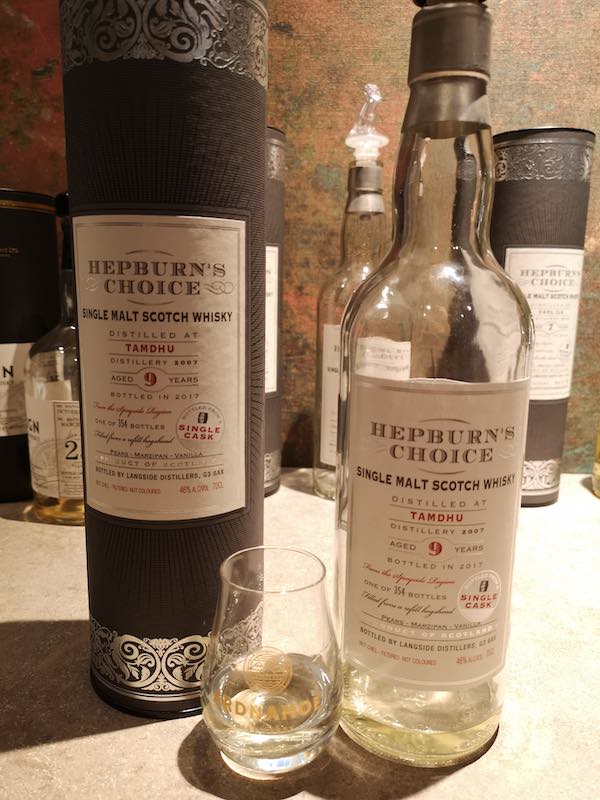
Tamdhu 2007 9 Years Old Bourbon
Looking at how low the fill level is, we know that this is a popular bottle. Despite the young age, the Tamdhu presented itself strongly with vanilla cream, coconut, fresh apples and a hint of oak. I enjoyed it so much that our guide poured me a second dram of that!
The other WhiskyGeeks member chose a Scarabus, a mystery Islay single malt. While we did not know for sure what the dram was, we had a lot of fun guessing it. Our final guess was Lagavulin, but our guide refused to confirm or deny it.
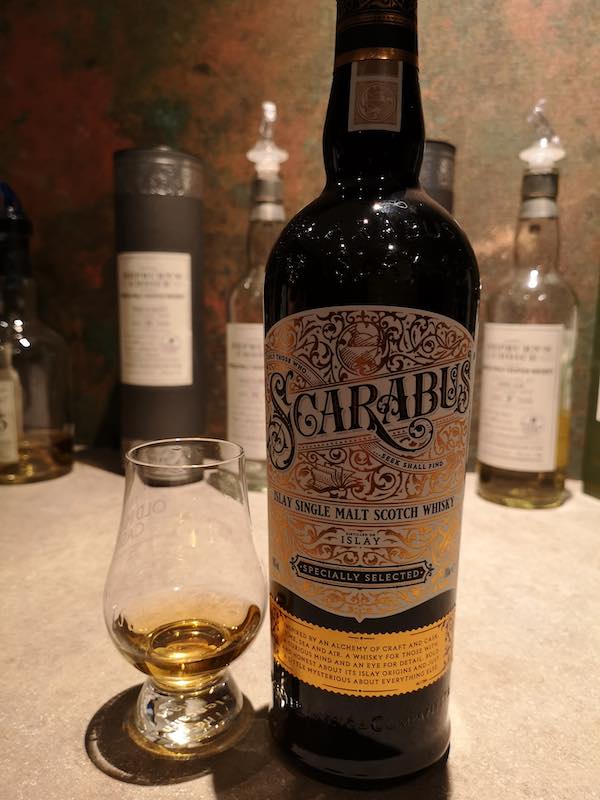
Scarabus
Our guide enjoyed our company so much (I think!) that he offered us a second dram! As he had already poured me a second dram of the lovely Tamdhu, I did not take advantage of the “second dram”. My partner chose another Hepburn’s Choice for his second dram, one that is named “Nice N Peaty”.
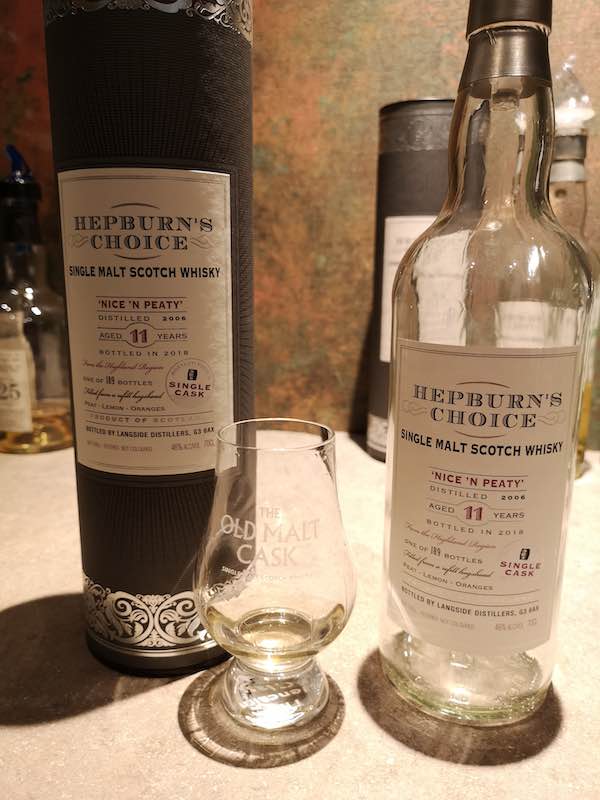
Nice N Peaty 2006 11 Years Old
The mysterious whisky in this bottle had us arguing for some time. All of us could not agree on the distillery. While we had no conclusion, it was great fun talking about it with our new-found friends from the USA.
All good things came to an end, and we eventually had to bring our remaining drams out to the shop as our guide prepared for the next tour. The shop and cafe, however, provided us with another surprise.
Once in the cafe, we took in the views and were really awed by the majesty of nature on Islay.
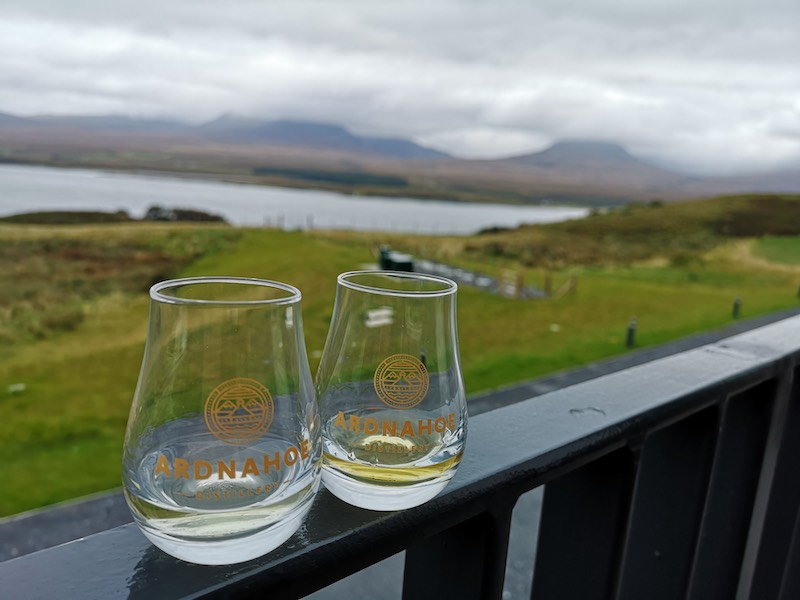
The Paps of Jura
Braving the cold once again, we walked out into the crisp, cold air outside the cafe and took this picture of the Paps of Jura. Due to the weather, the low-lying clouds hid the summits of the Paps, but we could still see them in all their majesty across the sea.
Lunch was simple and yet delicious, with a sandwich that filled the tummy up really well! The experience at Ardnahoe was excellent and we appreciate the friendliness of the team at the distillery. We hope to visit the distillery again in the future as we learnt that there are more tours available now, including one that goes to the warehouse!
Great news for fans for Chichibu whisky: Chichibu’s second distillery is now producing more Chichibu for the world! Recently, Daniel, a friend of mine, visited Chichibu in January of 2020 and spoke with Yumi about Chichibu 2!
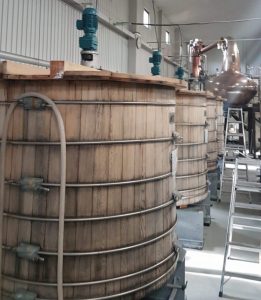
Chichibu 2020 Washbacks. Photo Credit: Daniel Wen
Each washback contains 10kg of yeast which undergoes fermentation for 4 days, compared to an industry standard of 48 hours. This longer fermentation time allows for slower lactic acid bacteria fermentation that contributes to the character of Chichibu’s new-make spirit. The cut of the heart of the distillate is also not just determined by measurements, but a human nose to ensure that the new-make spirit smells clean!
In Chichibu 2, the washbacks are wooden as well but made of European oak instead of Mizunara oak. Unlike Chichibu 1, Chichibu 2 has directly heated stills which could possibly produce a new-make spirit that is more robust and complex. I mean, there has to be a reason why Glenfarclas stuck with direct heating even after trying steam coil distillation. Chichibu 2 will use the same yeast as the original distillery but the fermentation time in Chichibu 2 is slightly longer.
Unfortunately, at the time of this article (March 2019), Yumi cannot answer how different the two Chichibu new-make spirit tastes. Production and testing started in October 2019, so adjustments may still be ongoing, and data might need processing.
One thing is sure, Chichibu 2 will produce 5 times the capacity of Chichibu 1! Currently, Chichibu 1 stands at a capacity of 60 000 – 90 000L of Pure Alcohol annually. That will mean more Chichibu to go around… in about three or more years.
Chichibu sources spring water from the nearby Arakawa (荒川) river. The water is clean and soft, suitable for fermentation and dilution.
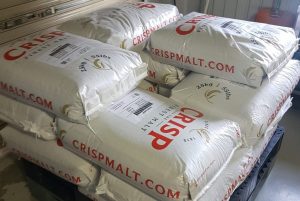
Bags of malted barley in Chichibu distillery 2020. Photo Credits: Daniel Wen.
Chichibu distillery is currently using barley from various sources. 70% is from Crisp malts in the UK, 20% is from Europe, and 10% is local Japanese barley! The grist ratio is at an industry standard of 70% grist, 20% husks and 10% flour.
The peated expressions of Chichibu currently use peat that comes from northeastern Scotland, in between the Highlands and Speyside.
The team at Chichibu also creates a unique Chibidaru cask. The Chibidaru is comprised of Mizunara cask ends (the circle) with American white oak staves.
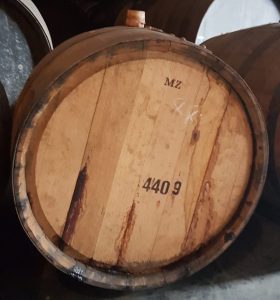
Mizunara cask at Chichibu distillery 2020. Photo Credits: Daniel Wen.
Mizunara (above) is somewhat porous and loses whisky quick. But this innovation minimises leakage and while still providing Mizunara flavours. Chibidaru casks are also smaller than the standard bourbon barrel. This small 130-litre cask offers a greater surface area to volume ratio than the standard barrel. Due to its smaller size, these Chibidaru casks rest atop of the casks in the warehouse. This position exposes the cask to a slightly higher internal temperature with more temperature fluctuation due to its smaller size. *flashbacks of heat transfer lectures* The combination of small cask size, higher average internal temperature and increased variation allows Chibidaru casks to mature whisky faster.
In most stacks of casks, the wee Chibidaru casks will be on top with 2 rows of 200L bourbon barrels below it, and the bigger 480L sherry butts at the bottom. Chichibu is also very experimental with the casks they use.
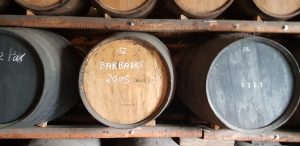
Rum Cask, 2020. Photo Credits: Daniel Wen
On the left are some Chichibu whisky sitting in Barbados rum barrels. Click here for more information on rum!
There was even an ex-tequila cask spotted in the warehouse! Unfortunately, that cask that I spotted 3 years ago is still maturing.
As mentioned earlier, Chichibu is using local barley, and Chichibu local barley might take a while to reach markets. Although the distillery intends to use more local barley, it is improbable that the distillery can move to use 100% local Japanese barley, especially with their plans of increased production.
Talks are underway to use local peat sourced from a company that is approximately 1km away from Chichibu distillery. Imported peat will still be the primary source for the foreseeable future.
The team at Chichibu hopes that the new distillery will push increase production. This would alleviate pressure off the first distillery, which can start doing unique experimental craft whisky. But look out, there may be a plan to do direct retail in the future if production allows!
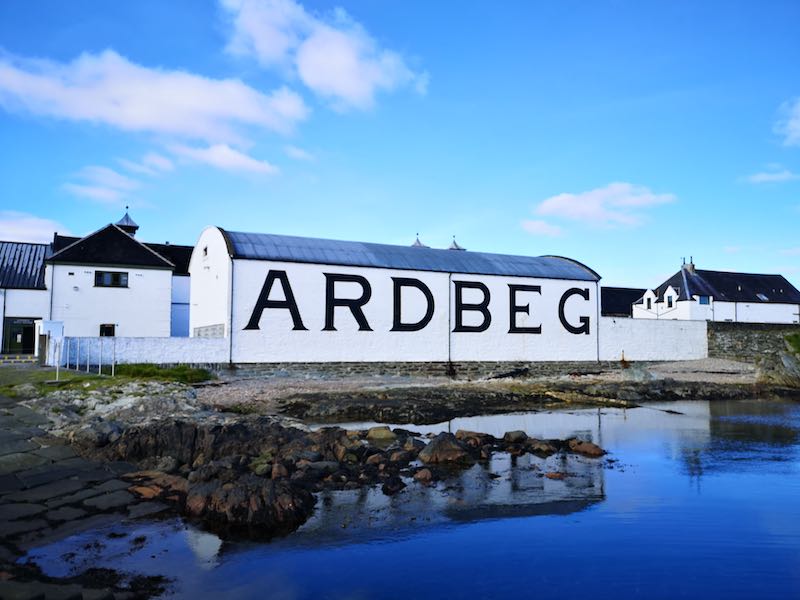
Ardbeg Distillery
After our fantastic Laphroaig tour, we moved on to the next distillery along the coast. Ardbeg distillery is yet another famous Islay powerhouse that produces excellent whisky! It used to be known as the “smokiest whisky”, but in recent years, the title belongs to Bruichladdich’s Octomore series. Nonetheless, many whisky lovers still refer to Ardbeg as the “smokiest whisky” because they think that Octomore is more peaty than smoky!
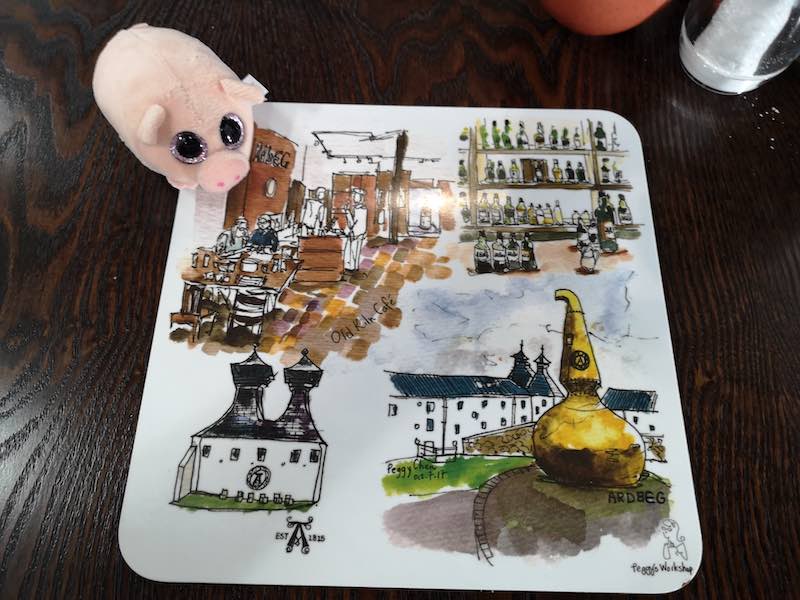
Ardbeg distillery is not only famous for its whisky. It is also renowned for its food. The haggis, nips and tatties came highly recommended, as well as some of their other food choices. We decided to have lunch there before we went for the tour. It was the perfect decision. The food was amazing! You would, however, had to go there to find out just how good they were!
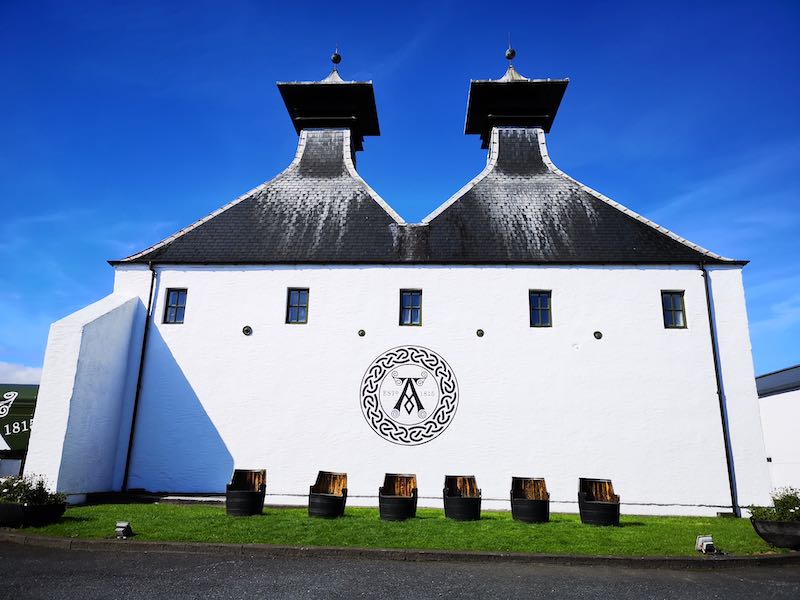
Ardbeg building behind the visitor centre
After lunch, we took a quick walk-around at the distillery while waiting for our tour to start. We found this quaint building at the back of the visitor centre, with chairs fashioned out of casks. It took a lot of patience to take a photo without someone sitting on those chairs! We wished that we could take those chairs home with us though; they would look grand at my home bar!
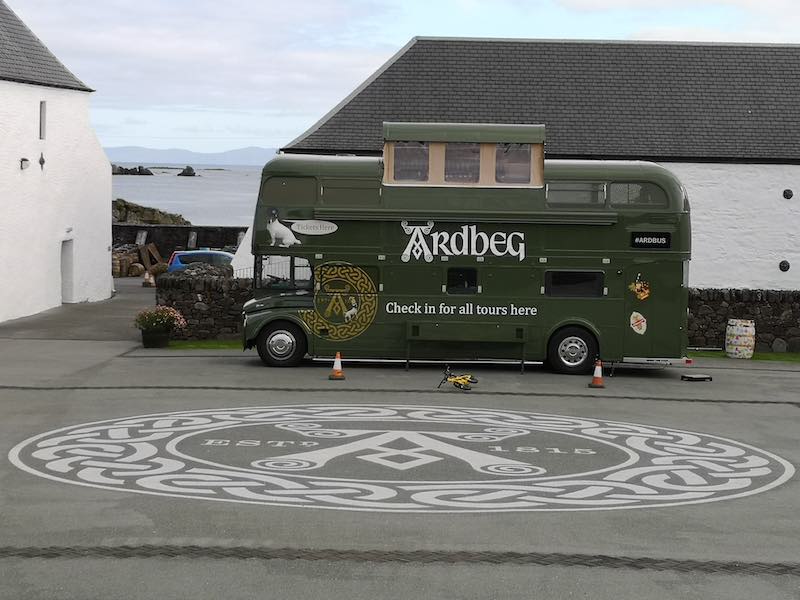
Ardbeg Bus
All tours at Ardbeg began in the area outside of the visitor centre, where a big Ardbeg bus stood. A child had cheekily placed his bike in the middle while he ran around. Our friendly guide came promptly at the start of the journey. After giving us a safety briefing, she took us back into the visitor centre where we gathered again under the Ardbeg signage for a headcount.
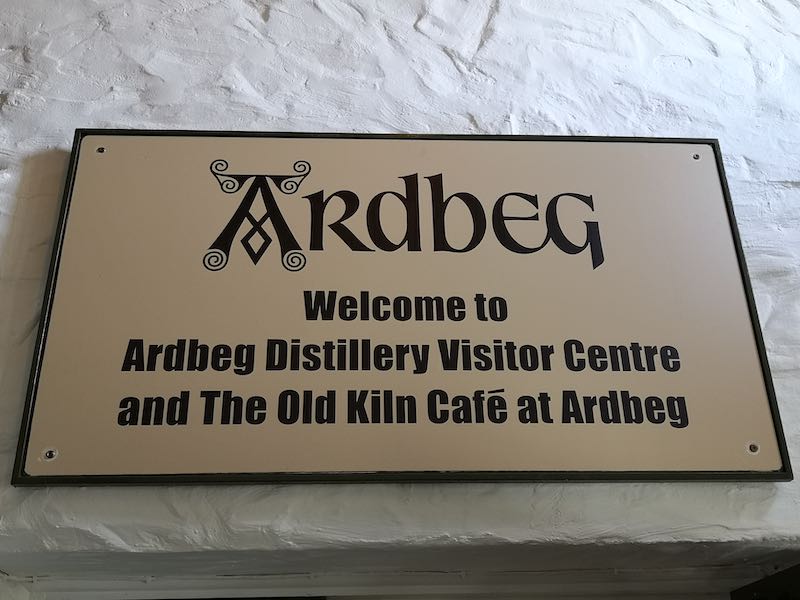
Once everyone was accounted for, we were off to the second floor, and into the actual distillery!

Barley
Ardbeg does not have a malting floor of their own. They buy customised malted barley (Concerto, smoked to 55ppm) from Port Ellen Maltings. Each batch of malted barley (30 tons) arrives at the distillery each week, and the malting team at the distillery grinds them into grist, husks and flour.
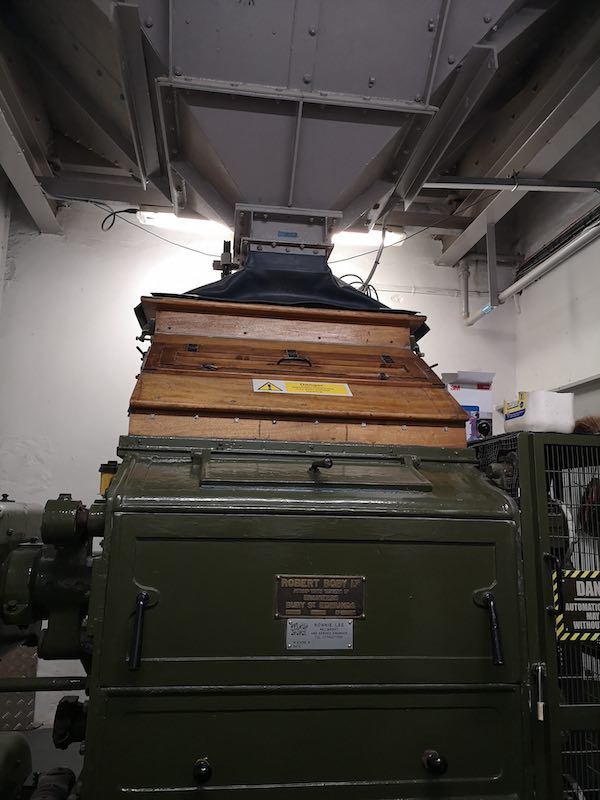
Bobby Mill
Say hello to the Bobby mill of Ardbeg. It is the machine that grinds the barley. There are only 4 Bobby Mills in Scotland. The four distilleries that have them are Ardbeg, Ardnahoe, Bruichladdich and Glen Scotia. The machine mills five tons of barley in each run. The team runs the mill for three to five seconds before catching a sample to weight and check if they got it right. The mill runs for 16 to 17 times in a week. The barley is grounded to 70% grist, 20% husk and 10% flour. The Bobby mill is a manual machine. The team depends on experience to know how long to run the mill as there is no control panel.
Fun Fact: Ardbeg bought their Bobby mill in 1921 at GBP300 as a secondhand! Imagine how much the Bobby mill will cost today!
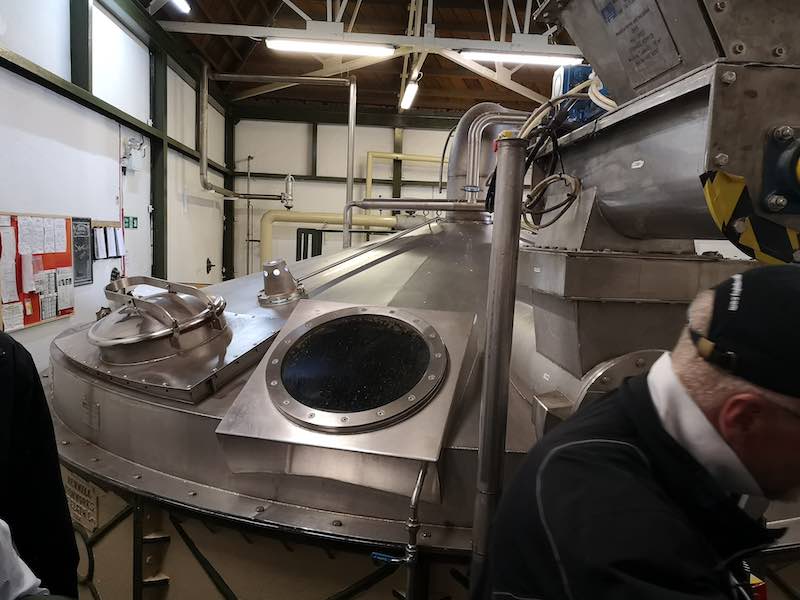
Mash Tun
After visiting the relic that is the Bobby mill, we proceeded to the Mash House, where we got into more action. The mash house is the location where the team produces baby whisky. To extract the sugar from the barley, the mashing team puts the barley into the mash tun and adds three steams of hot peated water to it. The first steam of water (17.5 thousand litres) is at 68 degrees C. The water sits in the mash tun for 15 minutes to fully extract the sugar before draining. The second steam of water, also at 68 degrees C, goes in after, and flows out immediately to join the first steam. The last steam of water at 80 degrees C. removes the last bit of sugar available in the barley. It is also drained immediately.
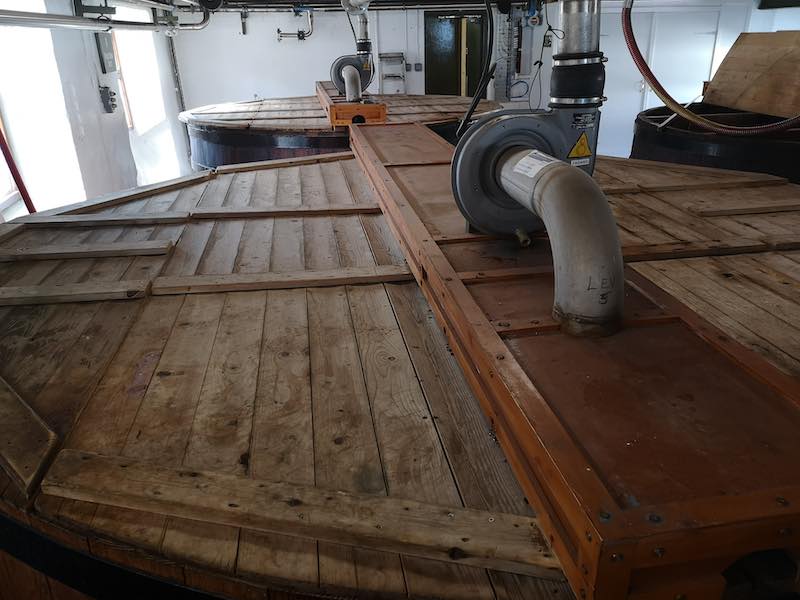
Washback
The liquid at the end of this process is no longer ordinary peated water. It has become wort or sugar water. The team cooled the wort to 18 degrees C before pumping it into the washback. Once ready for fermentation, the wort received 22.5 tons of yeast. Ardbeg sets fermentation at 55 hours in the summer, and 56 to 58 hours in other seasons. The long fermentation allows for flavours to form, but the process is exceptionally smelly!
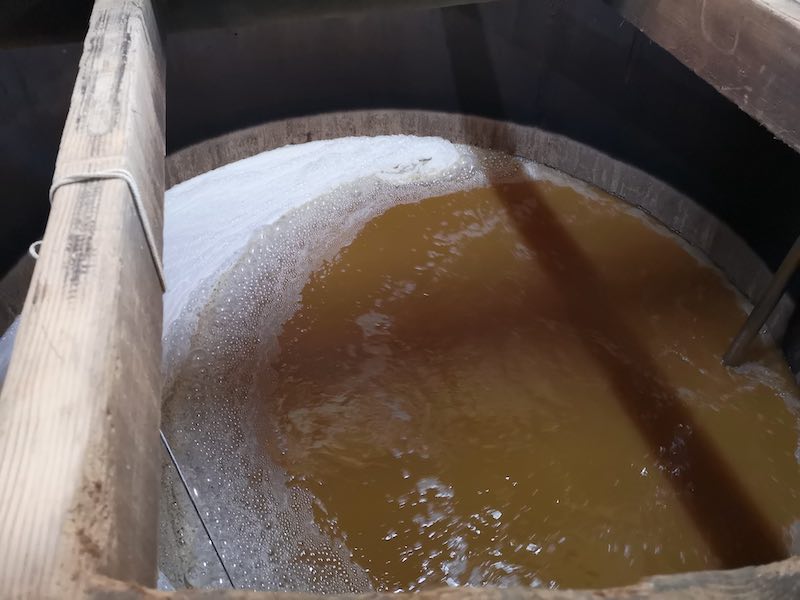
Yeast in Action
The end product of the fermentation process is known as the wash. The wash is technically a beer. It needs to go through the next step to become the clear liquid we know as new make.
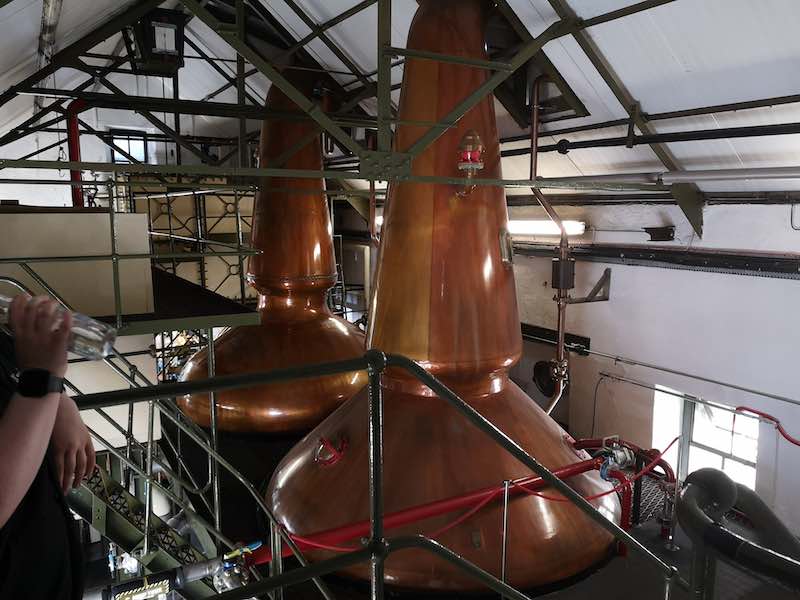
The Ardbeg Stills
The next step is the distillation, of course! 11.5 thousand litres of wash charges into the wash still at each run and undergo the first distillation. The interesting fact about this process is that the still actually can hold up to 18 thousand litres, but Ardbeg only charged 11.5 thousand litres into the still for every distillation. After the first distillation, the low wines (from the wash still) go into the spirits still for the second distillation.
Ardbeg cuts the heart of the spirit at between 73% abv to 69% abv. Anything above 73% abv is the head, and those below 69% abv is the tail. The head and tail will join the next charge of the wash in the wash still.
All new-make needs to mature three years in oak casks before they can be called whisky. Unfortunately, we were not able to see the warehouse at Ardbeg due to renovation. However, our guide brought us out of the distillery to enjoy some excellent views!
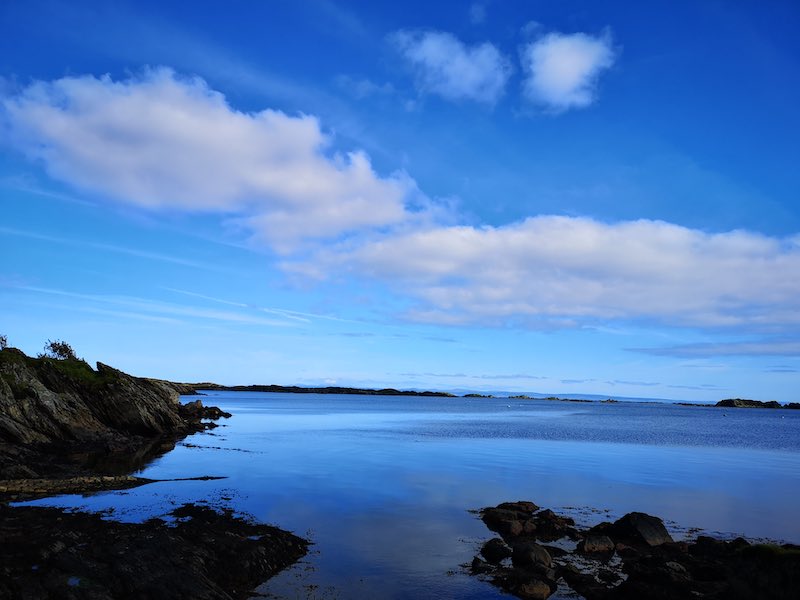
View from Ardbeg distillery
She also showed us the new building that will house the new Ardbeg stills at the distillery when the renovation completes. There will be four new stills at Ardbeg, and the two old stills will be melted. The new stills will double the production of Ardbeg whisky from 1.4 million litres a year to 2.8 million litres. Our guide shared that the distillery hopes the increased production will eventually push prices down for their whisky so that more people can enjoy the goodness of Ardbeg.
The tour group returned to the visitor centre, where we entered the bar located next to the cafe. Our guide ushered us into a secret room at the back, and when all of us were comfortably seated, she told us that we would be getting a dram from a choice of five bottles.
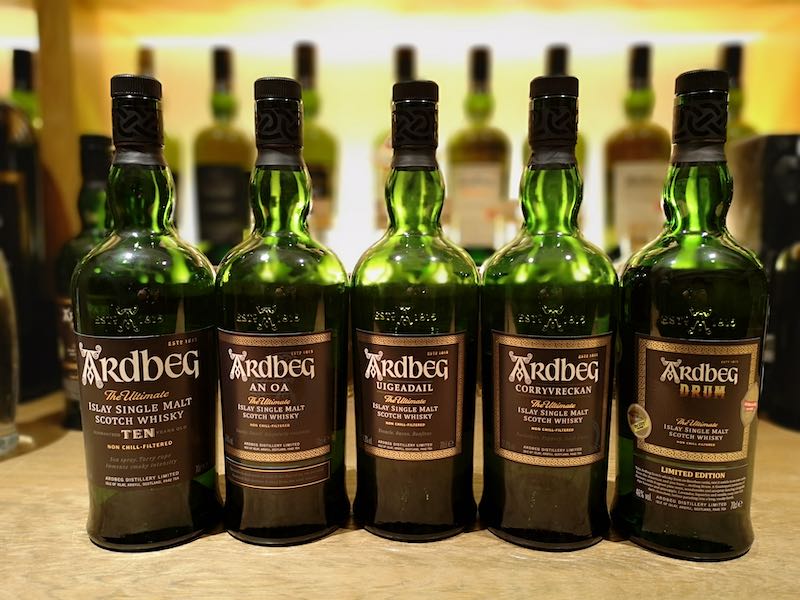
Available choices
If you are disappointed, please don’t think that Ardbeg is stingy. We went for their regular tour, and not the warehouse tour, which means that we only get one dram each. Both of us chose the Ardbeg Drum because we had all the other expressions before. The Ardbeg Drum reminded me of pineapples, which was stunning for us! Our guide stayed with us, and we had a wonderful time chit-chatting. Towards the end of the session, we even laughed at the expense of others when our guide shared her stories of how people mispronounced distillery names!
Before we went off, I managed to take a photo of Shortie, Ardbeg’s mascot!
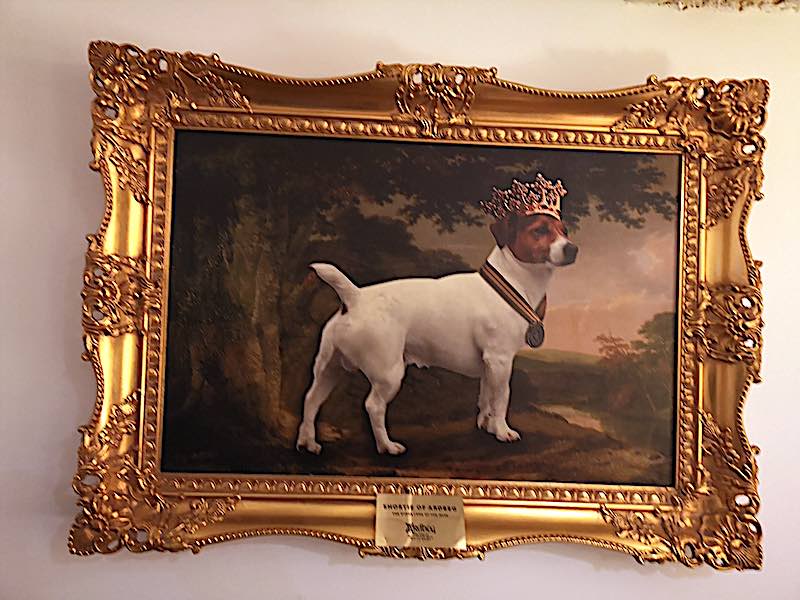
Shortie!
Shortie belonged to one staff member of Ardbeg. He was always naughty and ran around the distillery looking for treats. As a result, the distillery decided to name Shortie the mascot for Ardbeg. Even though he was no longer around, his spirits lived on in every person at Ardbeg distillery!
11311 Harry Hines Blvd
Dallas, TX, United States
(555) 389 976
dallas@enfold-restaurant.com
